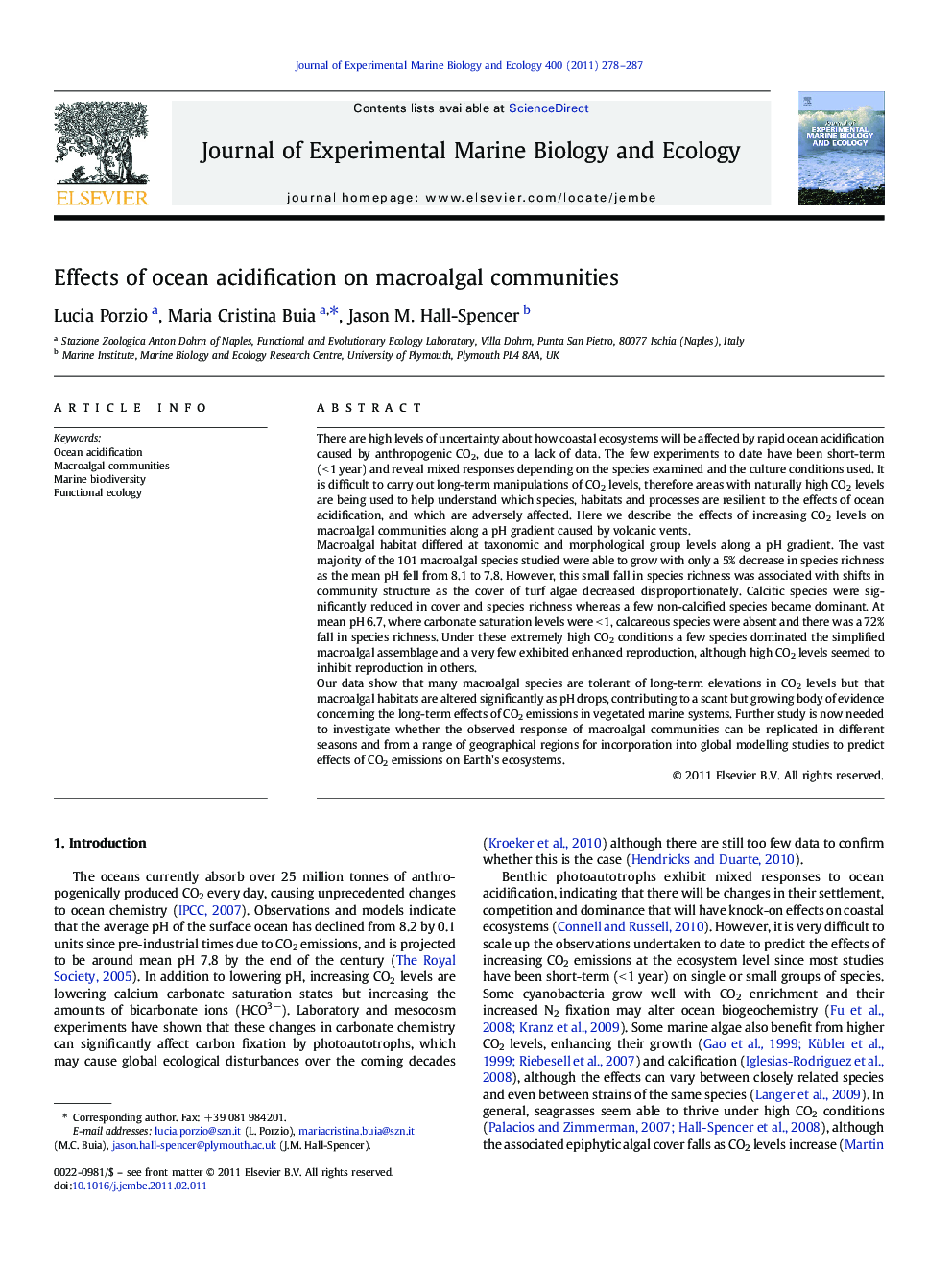| Article ID | Journal | Published Year | Pages | File Type |
|---|---|---|---|---|
| 4396357 | Journal of Experimental Marine Biology and Ecology | 2011 | 10 Pages |
There are high levels of uncertainty about how coastal ecosystems will be affected by rapid ocean acidification caused by anthropogenic CO2, due to a lack of data. The few experiments to date have been short-term (< 1 year) and reveal mixed responses depending on the species examined and the culture conditions used. It is difficult to carry out long-term manipulations of CO2 levels, therefore areas with naturally high CO2 levels are being used to help understand which species, habitats and processes are resilient to the effects of ocean acidification, and which are adversely affected. Here we describe the effects of increasing CO2 levels on macroalgal communities along a pH gradient caused by volcanic vents.Macroalgal habitat differed at taxonomic and morphological group levels along a pH gradient. The vast majority of the 101 macroalgal species studied were able to grow with only a 5% decrease in species richness as the mean pH fell from 8.1 to 7.8. However, this small fall in species richness was associated with shifts in community structure as the cover of turf algae decreased disproportionately. Calcitic species were significantly reduced in cover and species richness whereas a few non-calcified species became dominant. At mean pH 6.7, where carbonate saturation levels were < 1, calcareous species were absent and there was a 72% fall in species richness. Under these extremely high CO2 conditions a few species dominated the simplified macroalgal assemblage and a very few exhibited enhanced reproduction, although high CO2 levels seemed to inhibit reproduction in others.Our data show that many macroalgal species are tolerant of long-term elevations in CO2 levels but that macroalgal habitats are altered significantly as pH drops, contributing to a scant but growing body of evidence concerning the long-term effects of CO2 emissions in vegetated marine systems. Further study is now needed to investigate whether the observed response of macroalgal communities can be replicated in different seasons and from a range of geographical regions for incorporation into global modelling studies to predict effects of CO2 emissions on Earth's ecosystems.
Research Highlights► Natural CO2 vents are in situ model sites for the study of ocean acidification. ► First study on effects of increasing CO2 levels on temperate macroalgal communities. ► At pH levels predicted for 2100, there was a 5% decrease in algal richness. ► 25% loss in diversity of calcareous algae and turf algae decreased disproportionally. ► Sargassum vulgare was exclusively found at pH 6.7 where richness decreased by 72%.
